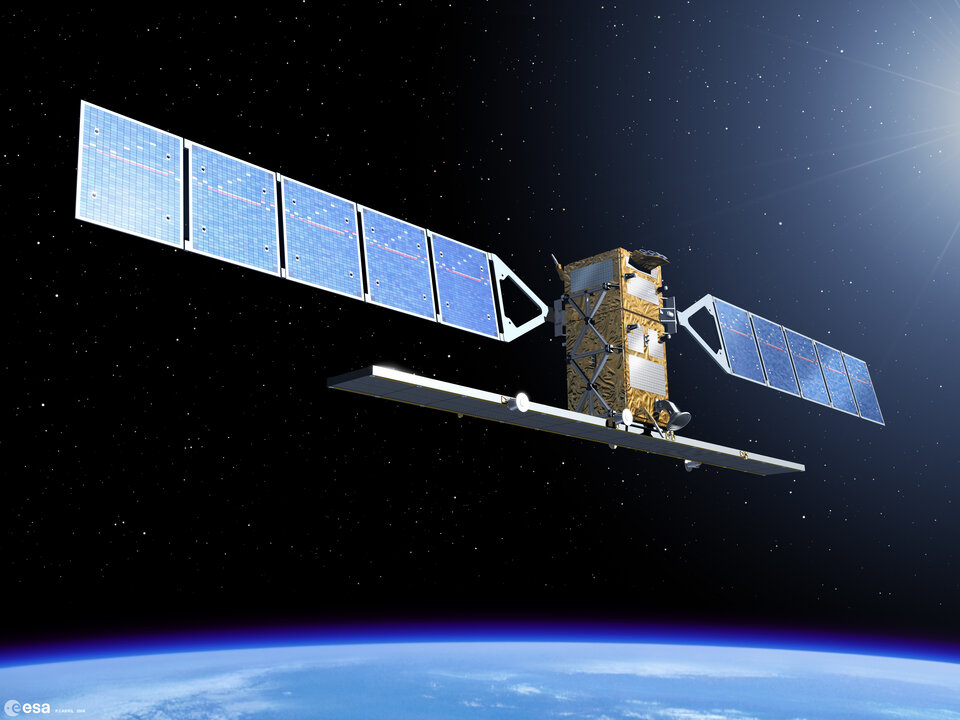ESA start-up company wins GMES Masters award
The one-man Dutch business BlackShore has won the top prize in the European Earth-monitoring competition. The winning project, Cerberus, exploits social media to advance Earth observation applications.
In its second year, the Global Monitoring for Environment and Security (GMES) Masters competition received more than 100 innovative business proposals from 20 European countries.
The competition fosters creative product development and entrepreneurship in Europe in the GMES service fields: land, ocean, air quality, climate change and emergency response.
The GMES Masters was created by ESA, the Bavarian Ministry of Economic Affairs, the DLR German Aerospace Center and T-Systems, and is supported by the European Commission.
This year, two additional German industry leaders – Astrium GEO-Information Services and European Space Imaging GmbH – joined the competition as partners.

The 2012 winners were announced on 25 October at an event in Munich, Germany organised by Anwendungszentrum Oberpfaffenhofen (AZO) GmbH.
Volker Liebig, Director of ESA’s Earth Observation Programmes, unveiled BlackShore’s project Cerberus as the overall winner – the GMES Master 2012 endowed with €20 000.
The project, which also won the European Space Imaging High-Res Challenge, is presented as a 'serious game' that involves participants in the creation of digital maps based on GMES data.
Cerberus users can mark where they see, for example, cracks in ice, damaged power cables or areas of drought on satellite images. This input is then translated into map layers to be used, after verification, by governments or other interested parties.
BlackShore is a Dutch start-up company hosted since 2011 at the ESA Business Incubation Centre Noordwijk, part of the Agency’s Technology Transfer Programme.

Josef Aschbacher, Head of the ESA GMES Space Office, presented the award for the ESA App Challenge to Dr Harald Skinnemoen and his team from the Norwegian company AnsuR Technologies AS.
Their crowdsourcing app ASIGN provides in-situ visual GMES validation and helps to organise professional field teams for crisis management.
During last year’s flooding in Thailand, the ASIGN mobile app demonstrated its usefulness by merging near-realtime information from space and the ground to help those struck by the disaster.
Meanwhile, an offshore oil spill and gas flare monitoring service based on upcoming Sentinel-1 and -2 data, called MOSP-RIOS, was chosen as the winner of the GMES Master’s Ideas Challenge. The proposed service was submitted by Daniele Di Erasmo and his team at Serco S.p.A. (Italy).

Taking home the prize of the DLR Environmental Challenge was Steve Lee of Scotland’s Stevenson Astrosat Ltd.
The company’s thermal and carbon efficiency reporting tool ThermCERT is designed to use space-derived data to increase the quality of thermal output measurements.
Dr Tim McCarthy and his team from the Irish company iGeotec Technologies Ltd won the prize in the T-Systems Cloud Computing Challenge for WAMSAPs – Wide-Area Monitoring using Spaceborne and Airborne Platforms.
This novel approach facilitates continuous monitoring of man-made and natural environments in a more timely and comprehensive manner.
Finally, BALIST, submitted by Dr Virginie Lafon and her team from the French Technology Transfer Unit GEO-Transfert, was chosen as the winning submission in the Astrium Radar Challenge.
This nearshore bathymetry service maps coastal water depths using data from the Sentinel-1 and -2 missions, which will be launched from 2013 onwards.









